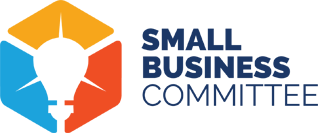One of the biggest issues faced by small businesses is the inability to access sufficient credit and capital.
Decline in Commercial Lending
Although improving in recent years, levels of bank lending to small businesses still remain below pre-recession levels. Given that nearly two-thirds of small businesses seeking capital report that a loan from a bank is their expected source of financing in the next six months, this trend is holding back our nation’s job creators, and in turn hampering the nation’s economic recovery. Small businesses employ half of the private sector, create two-thirds of new jobs, and account for more than 40 percent of the private sector’s contribution to gross domestic product.
In order to help small businesses gain access to the credit and capital they need to run their business successfully, Congress must adopt policies that support functional capital markets without imposing undue restrictions on banks or other providers of debt and equity capital.
SBA Financing Programs
Although making up only a small portion of all dollars lent in the U.S. to small businesses (the 7(a) and Certified Development Company (CDC) programs supported $29 billion in loans in FY13, compared to the $1.1 trillion commercial and industrial small business loans in the same time period), the SBA offers a number of financing programs designed to serve as a backstop for small businesses seeking capital that otherwise might not qualify. A brief summary of its core financing programs is below.
7(a) Loan Program
SBA guarantees loans made for general business purposes, issued by participating lenders to small businesses. Loans $150,000 or less receive a maximum guaranty of 85 percent, while loans greater than $150,000 receive a guaranty of 75 percent.
7(a) loans may be used to start a new business or to assist in the operation of, or acquisition of an existing business. Examples include purchasing inventory, acquiring land, expanding, or constructing a new building, and financing working capital.
CDC/504 Loan Program
The CDC loan program assists small businesses in financing the purchase of commercial real estate or equipment. Loans include three parts: 50% from a commercial lender, 10% from a borrower contribution, and 40% from a non-profit CDC. SBA guarantees 100% of the CDC’s portion of the loan, whereas SBA’s interest is secured by a second lien on the financed property.
504/CDC loans are limited to the purchasing of fixed assets, such as land, machinery, or equipment.
Microloan Program
SBA makes direct, guaranteed loans to intermediaries (non-profit community development corporations or economic development entities) who leverage the proceeds to make smaller loans to small businesses, particularly low-income or minority small business owners, and those with no credit history.
Microloans may be used in the same manner as 7(a) loans.
Small Business Investment Company (SBIC) Program
SBICs are privately-owned investment funds licensed and overseen by SBA. Funds receive SBA-backed guaranteed funds in the form of leverage (up to 3 times their amount of private capital, or a maximum of $150 million). Funds combine SBA-backed leverage with existing private capital to make debt and equity investments in small businesses
SBIC investments are used to serve the long-term capital needs of growing small businesses. SBIC investments may not be used by businesses to purchase real estate or other financial products, farm land, or any other activity deemed contrary to the public interest.
Rise in New Forms of Small Business Finance
In response to the credit gap left for small businesses left in the wake of the recession, new types of small business lenders are emerging. Online lenders, often backed by institutional investors or individual lenders, are helping small businesses obtain much-needed financing, and are growing at a rapid pace. For instance, the outstanding balance of such lenders is growing at about 175 percent per year. This stands in strong contrast to a decline of about 3 percent in the traditional banking sector.
While some online lenders only offer short-term loans with often exorbitant interest rates, there are others who offer rates comparable to those associated with the use of a credit card.


